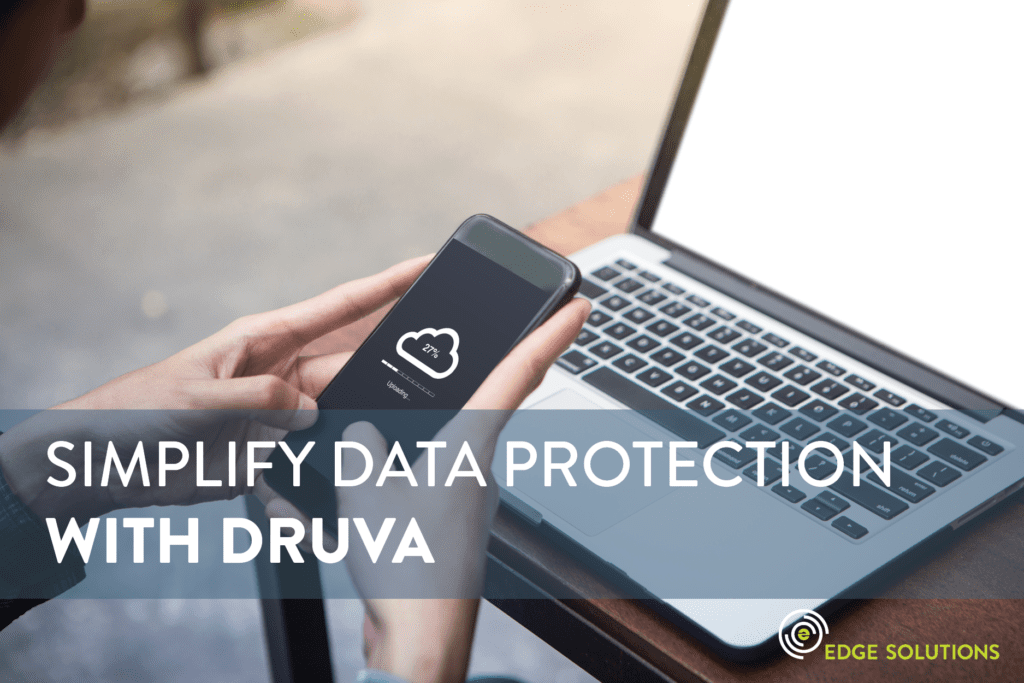Leverage the power of the public cloud for backup and recovery.
Managing the backup and restoration of virtual machines (VMs) in a distributed environment is typically an expensive and convoluted process requiring multiple staff members supporting a complex architecture of legacy data management systems. IT operations teams often spend more than 70 percent of their time on day-to-day management operations—monitoring, troubleshooting, patching, configuring, and updating resources.
An approach that leverages the unrivaled speed and availability of the public cloud can positively impact a company’s backup and recovery plans—without sacrificing performance, flexibility, or security, and at a dramatically lower total cost of ownership (TCO) than alternative options. Druva is an intelligent management-as-a-service solution to collect data and unify backup, disaster recovery, and governance systems into a single, optimized data set.
The challenges: Lack of mobility and visibility in the data center
Many modern IT departments have become frustrated with traditional backup methods and instead rely on available native point products, which results in a data protection strategy that consists of sometimes a half dozen or more disparate backup and recovery “solutions” that may or (most likely) may not be compatible with one another. Complex workflows and multiple vendors required by legacy solutions further add to their inefficiency and expense. This puts companies at risk of losing business continuity and failing to meet data security requirements.
As backup and recovery systems become more complex, there is an increasing lack of control and visibility—some IT teams don’t even know how much data their servers are storing. Without clear visibility into the volume of data, effective management is much more difficult.
“Druva is a great way to simplify data protection and make the lives of our clients a lot easier. It is a very flexible platform that allows you to implement backups across your entire business from desktops to the data center,” said Edge Solutions CTO Alex Theodore.
Simplified backup
The first step in any data protection plan is backup. Druva makes it easy for customers to protect and manage data across all endpoints, laptops, desktops, smartphones, and tablets, with one management interface and integrates seamlessly with Amazon Web Services. Store your data in the most secure cloud available, set backup schedules by device, and track and manage devices with a remote wipe, device encryption, and geolocation. This unified solution offers unmatched visibility—a global view of all endpoints and end-user cloud applications.
“Druva is incredibly simple to deploy, and once it’s up, it can provide a lot of value to our clients,” said Theodore.
Disaster recovery in the cloud
In 2018, billions of people were affected by cyber attacks and data breaches across a range of industries—hospitality, healthcare, fitness, retail, and more. Marriott, Under Armour, Quora, and Facebook suffered some of the most extensive data breaches of all time. No company is too big or too small to become a victim of a cyber attack. A solid disaster recovery plan is no longer a “nice to have”—it’s a critical element of every company’s data management strategy.
Many backup vendors claim to provide disaster recovery within their products, but these offerings are not optimized to ensure the continuous synchronization and fast recovery demanded by today’s modern enterprise. Effective disaster recovery is the continuous replication of business data to a separate location, where it can be protected from attack and restored quickly to maintain business continuity.
“Druva provides the ability to do disaster recovery in the cloud. It backs up your servers and can restore them in Amazon Web Services (AWS) with a single click,” said Theodore. Cloud-native backup and disaster recovery utilize technologies like global deduplication of virtual data so that only one copy of each file is maintained. This can result in bandwidth savings of up to 80 percent.
Furthermore, by leveraging the efficiencies of AWS or similar public cloud vendors, companies can take advantage of tiered storage, with data sorted into hot, warm, and cold storage depending on retention and recovery needs, providing long-term storage at an affordable price.
“By using the cloud for disaster recovery, businesses can significantly reduce costs over co-location and the purchase of infrastructure equipment.”
Accelerate cloud migration
Migrating large amounts of data from disparate legacy backup solutions—servers, tapes, data centers, offsite storage, or others—to the cloud could take weeks, but Druva can be used with AWS Snowball. Data is copied to the AWS Snowball drive using Druva, then shipped to AWS. During transit, Druva can keep track of changes and send them to AWS once the AWS Snowball has been restored in the AWS data center.
Druva’s single pane of glass dashboard allows IT to manage the entire migration process at scale through a single interface. Anytime, anywhere access to data limits productivity loss during the migration process while automated backup of data and system settings protect against data loss.
IT managers are increasingly tasked with the responsibility to “do more with less,” that is, finding a way to solve their technology problems while saving time and decreasing costs, not to mention safeguarding data for regulatory and compliance purposes.
“Since Druva is born in the cloud, it can scale and grow as you do, and provides a simplified and predictable pricing model for data protection,” added Theodore.
For more information on Druva, and how Edge Solutions can help, contact us today.
